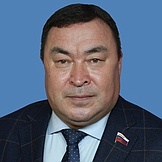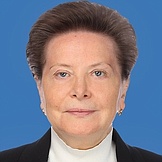Regional flags and emblems


PROFILE
Established 10 December 1930
Khanty-Mansi Autonomous Area – Yugra since 2003
Capital Khanty-Mansiysk
The Khanty-Mansi Autonomous Area – Yugra is part of the Urals Federal District
Area 534,800 sq km
Population 1 779 500 (2025)
Ethnic groups
(2020 National Census, %)
Russian – 70,30
Tatar – 6,31
Ukrainian – 3,29
Bashkir – 2,35
Azerbaijani – 1,68
Khanty – 1,55
Other – 10,51
Administrative divisions (2024)
Municipal districts – 9
City districts –13
Rural towns –26
Rural districts –57
Geography and climate
The Khanty-Mansi Autonomous Area – Yugra is in Western Siberia. At its widest points, the territory is 900 km from north to south and 1,400 km from west to east.
The area borders on the Republic of Komi, the Krasnoyarsk Territory, the regions of Tomsk, Omsk, Tyumen and Sverdlovsk, and the Yamal-Nenets Autonomous Area. The entire area of Yugra is located in the Far North.
The main rivers are the Ob, Irtysh, Konda and Severnaya Sosva.
The autonomous area is located in the taiga. One third of it is covered by swamps. The terrain is diverse with plains, foothills as well as mountains. The highest point is Mount Narodnaya (1,895 m) in Sub-Polar Urals, and Mount Pedy (1,010 m) in the Northern Urals. Some 300,000 lakes making up an entire lake system are surrounded by forests and swamps.
The area has a moderate continental climate. Its distinctive feature is a rapid change of weather, especially in the periods from autumn to winter and from spring to summer. Winters are long, snowy and cold. The temperatures reach −30°C; summers are short and warm.
January temperatures average −22.6°C and July temperatures average 18.1°C. Precipitation averages 25 mm in January and 59 mm in July.
The Khanty-Mansi Autonomous Area – Yugra has two state reserves: Yugansky and Malaya Sosva, as well as four nature parks, three federal nature sanctuaries and five regional nature sanctuaries and more then ten monuments of nature.
Government
The legislative branch in the region is represented by the Duma of the Khanty-Mansi Autonomous Area – Yugra, which is the permanent, representative and only legislative body of authority in the region.
The Duma is made up of 38 deputies, elected for a five-year term. 19 deputies are elected at single-member constituencies and 19 at the single electoral districts in proportion to the number of votes cast for the lists of candidates for deputies appointed by electoral associations.
The current Duma was elected on September 2021. Its term will expire in September 2026.
The executive branch is represented by the Government of the Khanty-Mansi Autonomous Area — Yugra, which is the region’s supreme permanent body of authority, and other bodies of executive authority.
The Governor of the Khanty-Mansi Autonomous Area — Yugra is the region’s highest-ranking official and head of the area’s Government. The Governor is elected by the Duma of the Khanty-Mansi Autonomous Area — Yugra for a period of five-years. The term of office of the current incumbent expires in September 2029.
Economy and natural resources
The Khanty-Mansi Autonomous Area – Yugra is one of Russia’s strategic regions providing the country’s energy security, and is the largest oil-producing region of Russia and the world.
Yugra ranks first in terms of several economic indices: it ranks first among the Russian regions in terms of oil extraction and electricity generation; it ranks second in terms of industrial production, natural gas extraction, tax revenue to the federal budget; it ranks third in terms of investments in the fixed capital.
Companies in the region form a significant part of the Russian economy: about 7.5% of industrial production and over 10% of federal budget revenue.
The industrial production forms over 70% of regional GDP; including natural resources extraction (some 80%) and processing industries (over 12%).
The region has about 100 oil and gas companies, oil and gas processing companies and a gas condensate stabilisation plant.
In addition to the traditional oil production, oil and gas processing and petrochemical industries are developing as well. The timber processing sector plays an important role in the regional economy.
The Khanty-Mansi Autonomous Area – Yugra ranks first among the Russian regions in terms of electricity generation. The production and distribution of electricity, gas and water is based on the energy sector of the region. The largest power stations are the Surgutskaya-1, Surgutskaya-2, Nizhnevartovskaya and Nyaganskaya regional hydropower plants.
Agriculture makes up about 0.3% of regional GDP and is based on livestock farming. The traditional activities of the small indigenous peoples of the North, such as reindeer breeding, hunting and fishing, as well as the harvesting of wild plants and mushrooms are developing as well.
The development of innovations takes a special place in the Yugra economy. In order to support innovative companies in the region, the High Technology Park and the non-profit organisations the Foundation to Support Yugra Businesses, the Foundation for the Development of the Khanty-Mansi Autonomous Area-Yugra, and the Foundation for Microfinancing of the Khanty-Mansi Autonomous Area-Yugra have been established. The region has some 130 innovative companies; most of them are residents of the Technology Park.
The Khanty-Mansi Autonomous Area-Yugra is an exports-oriented region. Exports take 95% of its trade, while imports account for less than 5%. The region exports mineral fuel, oil and oil products, bitumen oils, mineral waxes, timber as well as charcoal. Crude oil accounts for 99% of exports. Yugra purchases aircraft, boilers, mechanical equipment and spare parts for it, ferrous metal articles, electric machinery and equipment.
Culture and tourism
The Khanty-Mansi Autonomous Area-Yugra has unique natural, cultural together with historical resources. The region has historical and cultural landmarks, archaeological sites, museums, theatres as well as modern infrastructure for cultural, educational and active recreation. International competitions, festivals and forums held in the region make Yugra an amazing place.
The Khanty-Mansi Autonomous Area-Yugra has 35 museums and their branches, including 6 state museums: the State Museum of Fine Arts, the Raishev Gallery and Workshop, the House Museum of People’s Artist of the USSR Vladimir Igoshev, the Museum of Geology, Oil and Gas, the Museum of Nature and Anthropology, the Torum Maa Open-Air Ethnographic Museum.
Yugra’s cultural life has an entire system of brands which give it a regional identity.
Every year, Khanty-Mansiysk hosts international cinema art events. The Spirit of Fire film festival brings together young filmmakers.
Nation-wide events, such as the Yugra Field Museum Biennale forum and the Congress of Fathers Frost and Snow Maidens, evoke great interest.
The Khanty-Mansi Autonomous Area-Yugra is also known for the large number of regional cultural events: the Raven’s Day folk festival of small indigenous peoples of the North; the Magical Keys competition of young pianists; the White Space festival; the Love Russian-Style festival of Russian films; the Yugra Constellation competition of youth brass bands; the Films Burnt by the War film festival; the Theatre Spring festival of amateur theatres; the Yugra Museum Olympus competition; the I am a Child, I am a Creator festival of children’s animation art.
The developed tourist and recreation resources and infrastructure allow for developing various kinds of tourism in the region, including cultural, educational, active, environmental and ethnographic tourism. The tourist routes include landmarks of the region and cities, museums and nature parks. About 300 tourist routes and guided tours are offered.
Eco-trails and environmental and ethnographic expeditions give tourists an opportunity to learn about the nature of the region and its cultural as well as its historical heritage.
Popular are active and extreme sports such as alpine skiing, snowboarding and kiting. There are 7 alpine ski resorts: two in Khanty-Mansiysk, Nizhnevartovsk, Surgut, Raduzhny and Nyagan and Pyt-Yakha.
In the summer, tourists are offered a chance to do rafting on Siberian mountain rivers.


